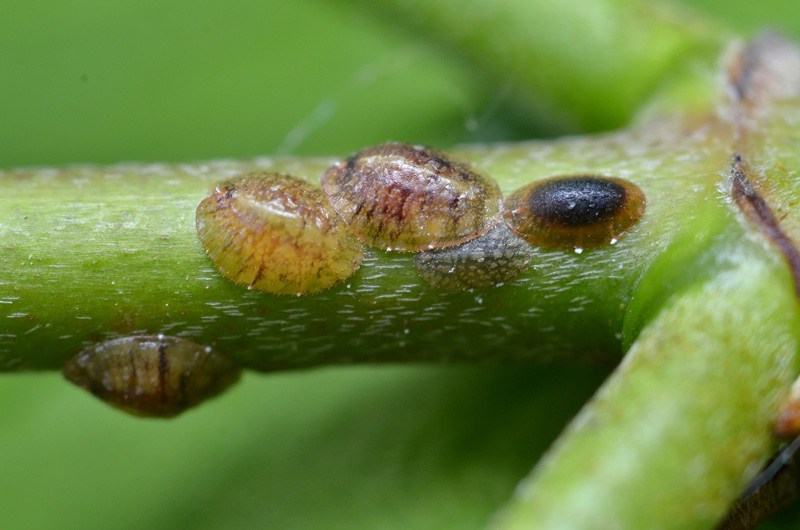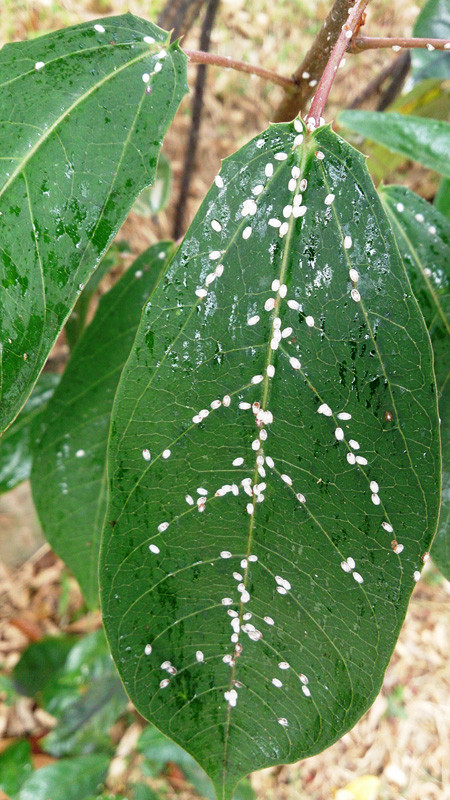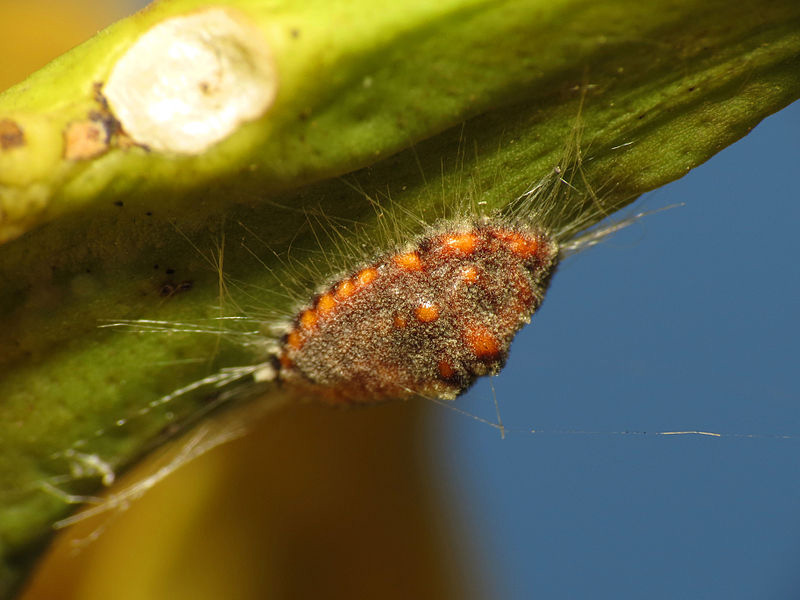Pest of the Month: Scale Insects
What Are Scale Insects?
Scale insects belong to the order Hemiptera and the suborder Sternorrhyncha . They come in a wide variety of shapes and sizes, ranging from 1-5 mm in length. These pests are known for their waxy, protective coverings, which often make them resemble tiny scales, giving them their name.

Gilles San Martin from Namur, Belgium
Characteristics of Scale Insects
- Appearance: Some species are small and oyster-shaped, while others have a shiny, pearl-like wax coating
- Females: Typically immobile and permanently attached to the plant they parasitize
- Males: Often winged (depending on the species) and short-lived, surviving only a day or two
Scale insects are classified into three main types:
- Armored Scale – Protected by a hard shell and difficult to remove.
- Soft Scale – Secretes honeydew, a sticky substance that attracts other pests and encourages mold.
- Mealybugs – Covered with a cottony wax and found on leaves, stems, and roots.
Identifying and Locating Scale Insects
Scale insects thrive in warm, dry environments and are often found on the undersides of leaves or around leaf joints. They are oval-shaped with protective shells that range in color from beige to brown.
Where to Look
- Undersides of leaves and stems
- Around leaf joints and twigs
- On plants showing signs of yellowing or wilting
Keep an eye out for sticky residue on your plants, as this may indicate the presence of soft scale insects secreting honeydew.
The Scale Insect Life Cycle
Understanding the life cycle of scale insects is essential for effective control.
- Egg Stage: Female scale insects lay eggs beneath their protective shells. These eggs hatch within 1-3 weeks.
- Crawler Stage: Newly hatched crawlers leave the protective shell to find a feeding site.
- Adult Stage: Crawlers grow into adult scale insects, developing their protective armor.
Since scale insects do not pupate, there may be several overlapping generations in a single season, especially in warm climates.
How do Scale Insects Damage Trees?
Scale insects cause damage by feeding on the sap of trees and shrubs. Their mouths pierce the plant’s surface, extracting nutrients and weakening the host.

Mokkie
Signs of Scale Insect Damage
- Yellowing or wilting leaves
- Stunted growth or branch dieback
- Sticky residue (honeydew) on leaves, stems, or nearby surfaces
- Black, sooty mold growing on honeydew deposits
Weakened plants become more vulnerable to secondary issues, including:
- Pest infestations
- Fungal diseases
- Drought stress
- Cold weather damage
Soft scale insects are particularly troublesome due to their honeydew secretion, which not only harms plants but can also damage cars, sidewalks, and outdoor furniture.
How to Control Scale Insects
If you suspect a scale insect infestation, take action immediately to protect your trees and plants. Here are the best methods for controlling these pests:

Katja Schulz from Washington DC USA
1. Prune and Dispose
- Remove infested leaves, twigs, and branches promptly.
- Dispose of cuttings properly by burning them or sealing them in a bag for disposal.
2. Manual Removal
- Wear gloves and remove insects by hand if the infestation is small.
- Dab individual pests with a cotton swab dipped in rubbing alcohol to kill them.
3. Apply Horticultural Oils and Organic Pesticides
- Use horticultural oils to smother scale insects at all life stages.
- Apply organic pesticides several times for consistent results.
4. Introduce Beneficial Insects
- Release natural predators such as ladybugs or lacewings to target scale crawlers.
Preventing Scale Insect Infestations
Prevention is always better than treatment. Follow these tips to keep scale insects at bay:
- Regularly inspect your trees and shrubs for early signs of infestation.
- Avoid over-fertilizing, as this can attract scale insects.
- Keep your landscaping healthy with proper watering, pruning, and maintenance.
Our Final Thoughts on Scale Insects
Scale insects can be a persistent and damaging pest, but with the right strategies, you can protect your trees and shrubs from harm. Early detection, consistent treatment, and preventative measures are key to keeping your landscaping pest-free.
If you’re in the San Francisco Bay Area and need expert assistance in managing scale insects or maintaining the health of your trees, contact Arborist Now . Our team is here to help you protect your landscape and ensure its beauty year-round.
Originally posted on April 18, 2019
Title Image: Katja Schulz from Washington DC USA


